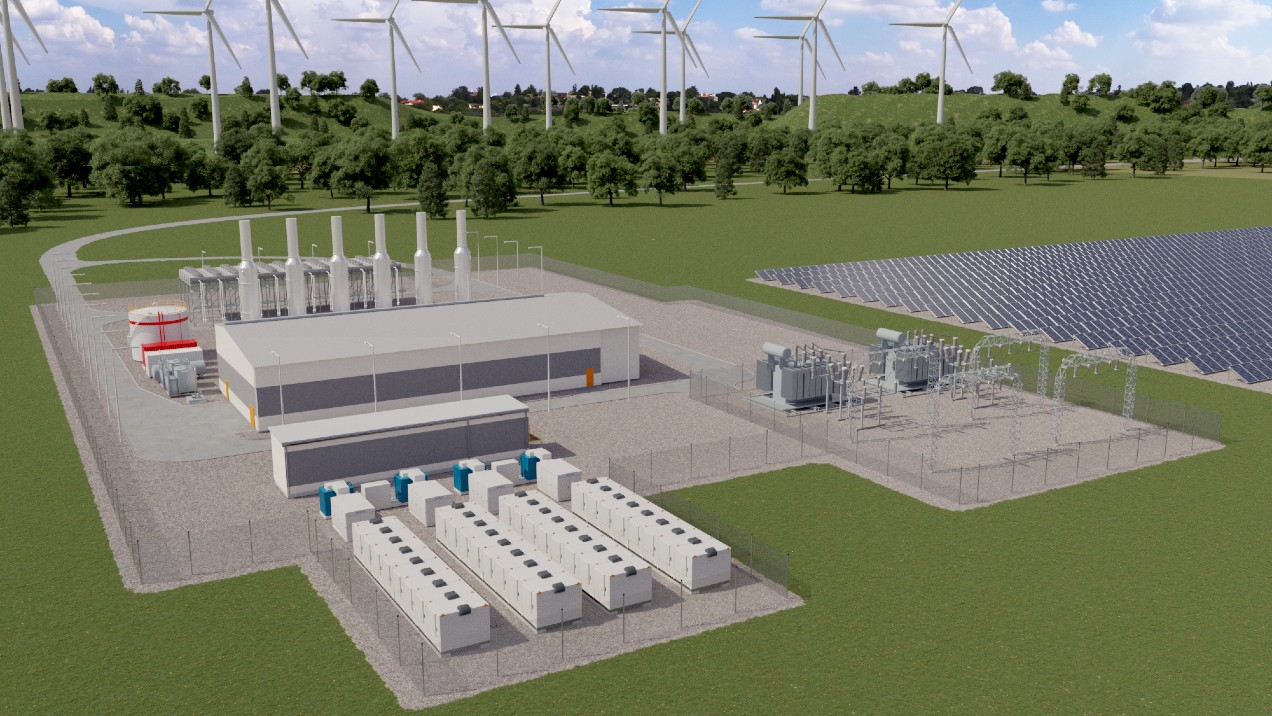
The 50MW/100MWh energy storage system will be directly connected into the transmission system. Image: Wärtsilä.
Wärtsilä is to provide a 50MW/100MWh energy storage system for SSE’s first grid-scale battery project in Salisbury, Wiltshire.
It will be the first such site to be directly connected to the transmission network by SSE’s new solar and battery division. The battery order was booked in April 2022, and the system is expected to be operational by September 2023.
“Today is a key milestone for SSE as we build out our first battery storage project at Salisbury, but it is also just the beginning of a multi-GW pipeline of solar and battery projects to come,” Richard Cave-Bigley, SSE’s director of solar and battery, said.
“Battery storage has a key role to play in helping the UK to decarbonise by ensuring we make the most of the increasing levels of renewable energy coming onto the Grid. SSE is investing £24bn over this decade (circa £7m a day) in low carbon infrastructure of this kind and we are delighted to be working alongside Wärtsilä to provide the balancing and flexibility services we need to help the UK get to net zero.”
Wärtsilä’s GridSolv Quantum, a fully integrated, modular and compact energy storage system, will be used for the site, as well as its energy management software GEMS Digital Energy Platform. The asset will provide grid balancing services such as wholesale energy trading.
The Salisbury site development follows SSE acquiring the development rights for the 50MW battery storage asset from Harmony Energy in August 2021. Additionally the company acquired its first solar farm in January 2022, taking on the development rights for a 30MW solar farm at Littleton Pastures from Stark Energy.
Wärtsilä meanwhile is installing a number of similarly sized battery energy storage systems around the UK, including working on the 50MW/50MWh Kemsley battery with EDF and Pivot Power which went live at the end of last year.
“The UK can capitalise on its massive potential for renewable energy by building more of it right now, but energy storage must not be overlooked – effectively balancing the intermittency of renewables is the missing part of the net zero puzzle,” said Kenneth Engblom, vice president of Europe and Africa, Wärtsilä Energy.
“If properly deployed, energy storage will enable the grid to deal with fluctuations in renewable energy supply and ensure that the end users of energy have secured power supply as we switch to cheaper, cleaner energy. This project is a big moment for us as we help one of the UK’s largest energy players scale up renewable energy and provide more British consumers with reliable, low-cost, and clean energy.”

